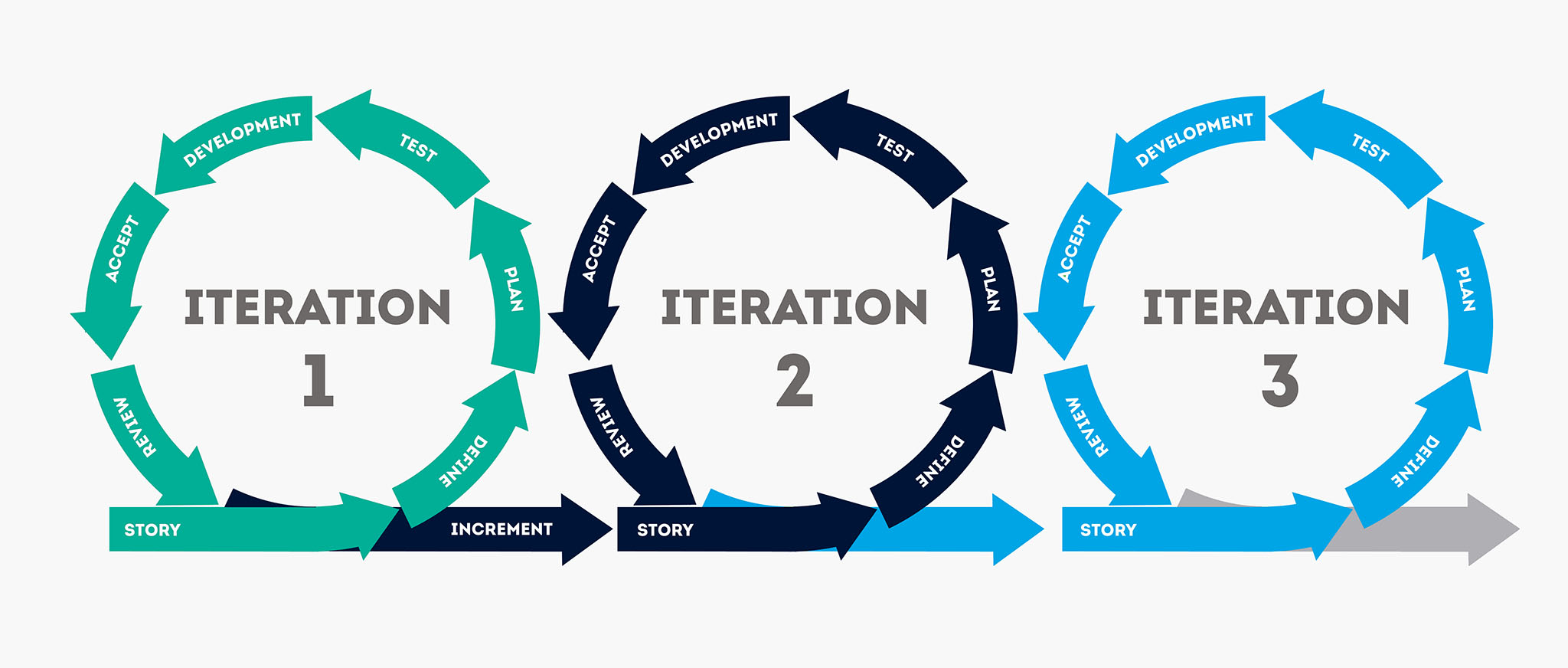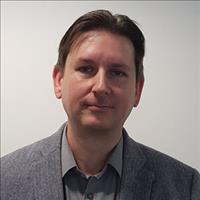Driving customer excellence
How a business develops its products and delivers its services often depends on how its teams are structured. For example, a startup company may have a flat structure where everyone jumps in and helps out. In time, that may evolve into a hierarchical structure that’s split into functions or divisions.
Traditional hierarchical structures offer many advantages. For example, they create layers of authority for scale; they allow specialisation; they can strengthen decision making; and they give staff a clear career path. The downside of hierarchies is that they can create silos and virtual walls between teams, leading to poor communication and inefficiency. These problems aren’t guaranteed but they can develop over time, especially if priorities are not aligned and there’s resistance to requests between teams.

In software development, these issues can be observed when using traditional waterfall methods to run projects. At set transitional stages, work is passed between teams to achieve the goal. If communication is good, the handover might be smooth. If not, it can be like throwing the work over a metaphorical wall. Each stage might be represented by a distinct group of people. Unless they’re aligned on the common goal, inefficiencies may occur. Worse still, misinterpretation at the transition can change the original intention. The whole situation can be exacerbated when aspects of the problem are changing, such as the requirements. These risks have led many software businesses — including ION — to adopt agile project management. In Asset Management, that journey started in 2014 and focused on the software delivery process.

It’s important to note that agile methodologies don’t prescribe organisational structures. Rather, the reduction of wastage and better linkage between individuals often lead to changes in the organisational setup. Parts of the hierarchy may be reduced with fewer functional splits so that developers, designers, and quality assurance all become equal members in a single team. The structure may become flatter, or the business may adopt matrix reporting. More importantly, the organisation’s structure matters less because its values and principles are more profoundly aligned.
At the heart of the agile philosophy is the principle of kaizen, a Japanese word meaning “change for the better”. The Agile Manifesto captures these values and the spirit of customer excellence. That is, placing a higher value on individuals and interactions, collaboration with customers, delivering working software, and responding to change. Continuous improvement and review lead to improved delivery, higher quality, and better software.
But better software delivery alone doesn’t necessarily lead to customer excellence. In fact, a lack of direct linkage between the teams who build the software and the teams who support and operate it can also be represented by virtual walls. The agile principles, and more importantly the spirit of kaizen, need to permeate to all parts of the business. Every interaction with customers must drive customer excellence. The linkage and transition points between teams can influence the speed and outcomes of that interaction.

In 2006, Amazon CTO Werner Vogels championed the concept of “you build it, you run it.” This gave rise to the principle of DevOps. Fundamentally, this means the person who builds something is responsible for supporting and operating it. There’s no better encouragement to fix something than being called in the middle of the night because you made a mistake. Developing better empathy with the problem through direct exposure can also improve the software. Coupled with continuous improvement, a team needs to make sure mistakes are never repeated and build robust software continually. DevOps seeks to close the loop between building and operating. It does this by improving monitoring and feedback from a service to drive software improvements.
In financial services, the concept of a developer touching the production environment can be challenging. It’s often prohibited by security policies. Asset Management firms are increasingly focusing on improving security, both internally and to meet the requirements imposed on their vendors. Typically, Chief Security Officers (CSOs) want to see a separation of concerns, especially between development and operations. Protecting all parties from regulatory scrutiny is paramount and a traditional approach has been to reduce the footprint of access. Financial service software needs to be highly available. Potentially, users can trade some assets 24 hours a day, 7 days a week around the world. This time range can challenge the team that wrote a particular piece of functionality to support it all year round. With this problem, and international support and operations teams, how do we drive towards the same outcomes? The key is knocking down walls, driving direct paths of communication, aligning what matters to everyone, and working as one machine.

In motor racing, pit stops can make or break a team’s ability to win. As with DevOps, the engineer who designs the wheels and the mechanic who has to fit them are unlikely to be the same person. But with an acute understanding of the problem, constant tuning of the process, and refinement of the design, a team of 20 people can perform more than 20 separate operations in less than 2 seconds.
Over the last 18 months in the ION Asset Management group, we’ve brought the support, operations, and build functions closer together. This has led us to change our organisational structure, our working practices, and how we think about continual improvement. These functions now work together more closely than ever to review data about our services and support, and drive improvements to our processes and software. Software build teams now understand better than ever how our solutions are used, so we can make them more resilient and easier to support. This leads to more proactive resolutions, which are now measurable. Our services were already good, but we’ve been able to take them to the next level. What’s more, by adopting the mindset that everything can continually be better, everyone can share the expectation that there is always another level.
The LatentZero product suite is used by some of the largest asset managers in the world and we’ve enjoyed great customer tenure. But customer excellence and improvement apply to even the most satisfied customers.
Learn more about ION's LatentZero
To learn more about our LatentZero solutions and how we can deliver customer excellence to your business, contact us today to book a demo.


